See 6 Yards Transformed by Losing Their Lawns
http://decor-ideas.org 01/04/2015 23:13 Decor Ideas
If you’re rethinking the lawn in your yard and looking to do something different, these six yards featured on Houzz in 2014 can provide some ideas and inspiration. Each homeowner left the lawn behind in favor of something else. One homeowner turned his parking strip into a sidewalk farm, while another with a grassy waterfront property restored the natural shoreline to welcome back wildlife and marine life. Others remade their spaces to provide better outdoor living areas.
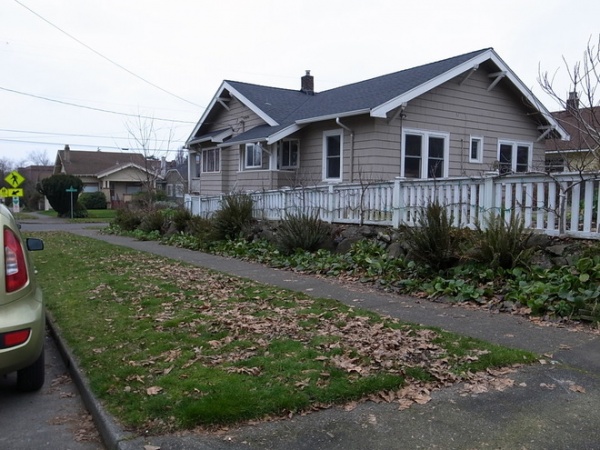
Farming the parking strip. What to do with that narrow strip of land between the sidewalk and the curb? Known for typically having poor soil and limited water access, and falling under city regulations, hell strips can be exactly what their name says. Some diligent homeowners landscape and maintain theirs like the rest of their yard, whereas others let their strips go.
BEFORE: Tom Richardson’s 1,000-square-foot parking strip consisted of a lush green lawn. Already an urban gardener, he saw an opportunity to make better use of this plot by expanding his current crop beyond his yard into the strip. His home, in the Wallingford neighborhood of Seattle, is located across the street from a park, so he also wanted to create an accessible spot that would welcome walkers and parkgoers.
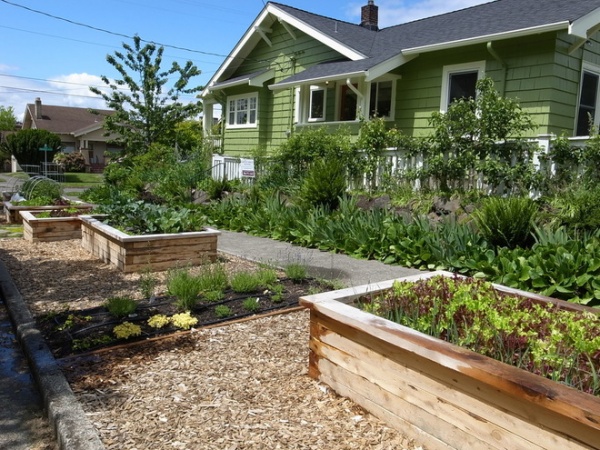
AFTER: Landscape designer Erin Lau replaced the lawn with six custom raised beds made of juniper, pollinator beds and a small stone birdbath. The size and placement of the beds follow local regulations and keep plants safe from passing dogs; extra-wide seats around the edges give passersby a place to rest on their way to the park. Richardson grows everything from tomatoes to carrots, and the garden gives him exactly what he wanted: a fresh salad for dinner every night and frequent questions about raised beds and edible gardens.
See more of this Seattle parking strip
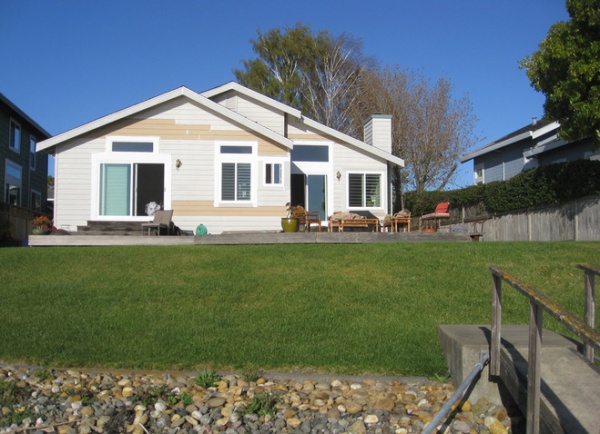
Losing the chemicals for wildlife. Windi Heaton has a beautifully scenic waterfront property in Marin County, California. Her backyard abuts a lagoon in the small community of Bel Marin Keys and sits across the waterway from a bird sanctuary and wetland restoration project.
BEFORE: But the expansive back lawn and weathered deck did nothing to enhance her backyard experience. The lawn required a lot of water and chemicals to keep it alive and was a virtual wildlife desert. In addition, there was no path for Heaton to walk on from her deck to the water. And aside from the deck, there was no seating area for enjoying the landscape.
She hired landscape designer Eileen Kelly to create a chemical-free, low-water and low-maintenance landscape that would bring back the wildlife and give her the garden the location called for.
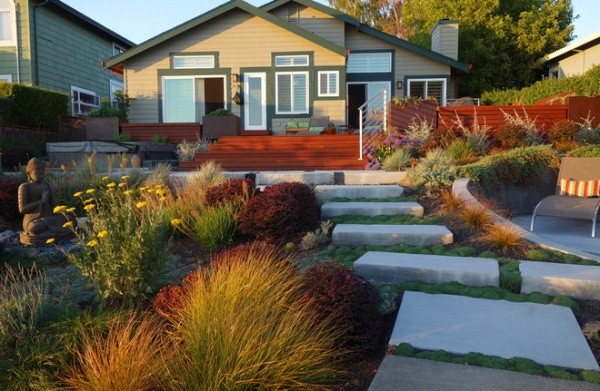
AFTER: Kelly mixed a variety of California native and drought-tolerant plants in shades of burgundy, orange and yellow to create a lush, dynamic garden. A paver path makes it easy to move through the garden, and multiple seating areas allow people to linger. In addition to creating a much more inviting outdoor space, eliminating the lawn has minimized garden maintenance, reduced water use and welcomed the birds and bees back into the garden.
See more of this Marin County waterfront garden
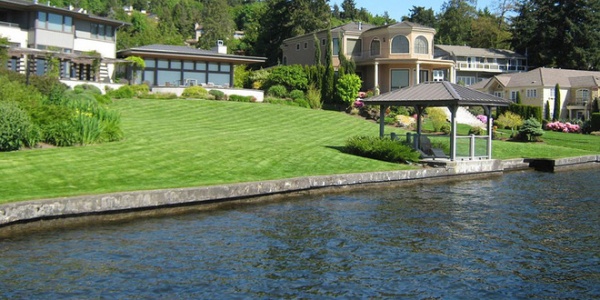
Reclaiming a native coastline. Here was another waterfront garden dominated by lawn, this time on the shores of Lake Washington, near Seattle.
BEFORE: Western Washington may not be facing the drought conditions of California, but this lawn and concrete bulkhead did not reflect the original coastline or landscape, nor did it allow the homeowners to take advantage of the nearly 1-acre site. They wanted a landscape that would blend with the natural setting rather than disrupt it.
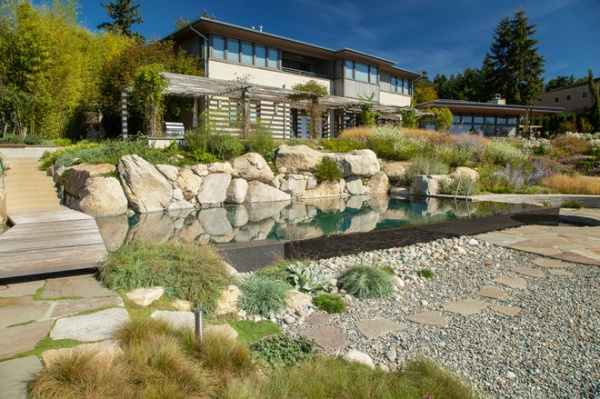
AFTER: Landscape designer Paul Broadhurst took the homeowners on a kayak ride to the Nature Conservancy’s Yellow Island Preserve in Puget Sound to help them picture the lush, natural landscape he envisioned. Broadhurst added a pool and planted an abundance of local native plants. He also restored the shoreline, arranging pebbles, boulders and downed timbers along the waterfront to welcome local wildlife and marine life. The new beach also draws the homeowners and their grandchildren down to the water. This project has been featured as a pilot program in a Washington and British Columbia initiative to restore natural shorelines.
See more of this Washington lakeside garden
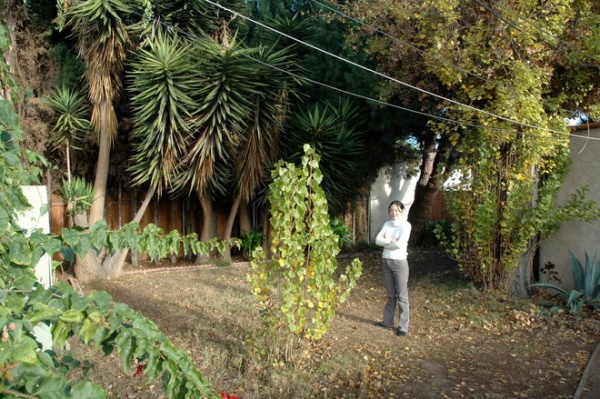
Embracing California’s climate and lifestyle. Designer Chris McCullough and architect Peggy Hsu of Hsu McCullough tackled a years-long remodel after buying a 1920s Spanish-style bungalow in Los Angeles.
BEFORE: The backyard lawn was on the way out by the time they started work on the landscape, but the front-yard grass was still growing strong. The space needed to accommodate outdoor living nearly year-round and couldn’t require much water, if any at all.
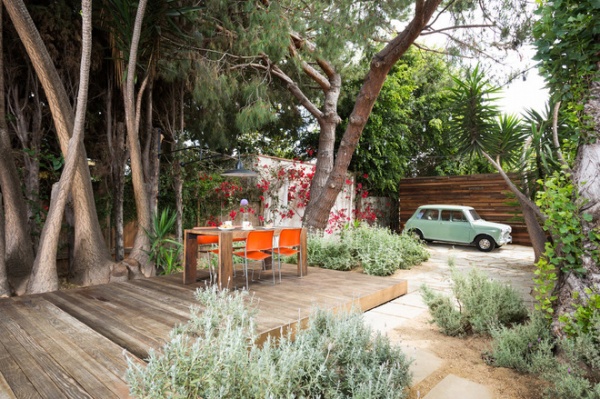
AFTER: Mature yucca trees frame the platform deck and outdoor dining area that McCullough and Hsu built. Gravel, decomposed granite and flagstone cover the ground, and hardworking, drought-tolerant plants — such as lavender and Jerusalem sage — frame the living space. The plantings need little or no watering, require minimal maintenance and enhance the home’s Mediterranean influence. String lights and a reclaimed-wood wall frame the outdoor living space.
See more of this Los Angeles home and garden
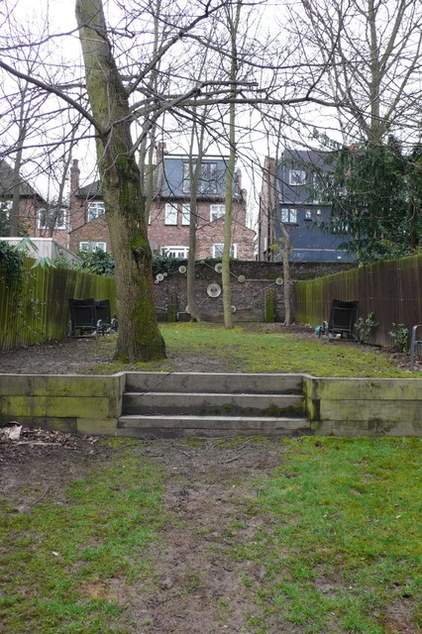
Adding enchantment and mythology to the garden. These Londoners weren’t looking so much to remove their lawn as to add so much more to their landscape.
BEFORE: The long, narrow terraced garden had no story. There was no progression or experience from front to back. Multiple visits to Barcelona, Spain, had made the homeowners enamored with Catalan architect Antoni Gaudí’s work, particularly his Güell Pavilions. They decided to bring the myth he referenced in a wrought iron dragon gate to London.
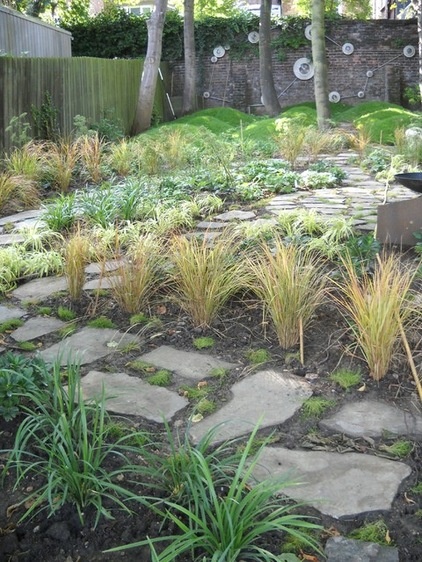
AFTER: A serpentine path winds through the garden, passing grasses, flowers, foliage and a spiral seating area on its journey to the garden’s far corners. Existing mature trees, turf mounds and a celestial art piece draw visitors into the garden. At night outdoor lights and a fire pit transform the garden into a mythical space.
See more of this enchanted London backyard
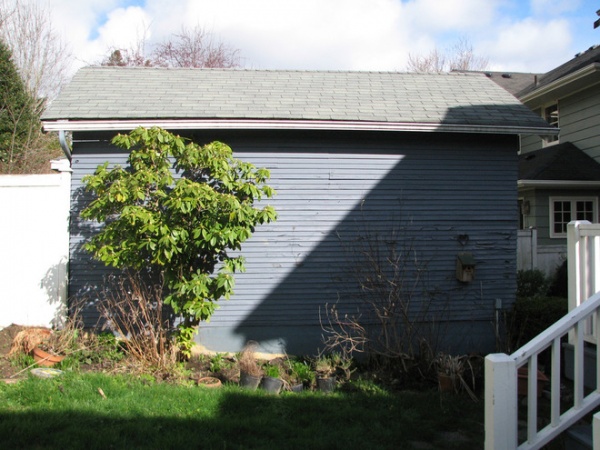
Taking indoor living outside. This was a soggy backyard in Seattle’s Mt. Baker neighborhood.
BEFORE: It was difficult for the homeowners to walk from their back alley to the back door, and nearly impossible if they were carrying groceries or anything else from the car. They didn’t want architect Tyler Engle to design them a garden so much as smooth their passage from the car to the house as well as build an outdoor room to bring their inside life outdoors.
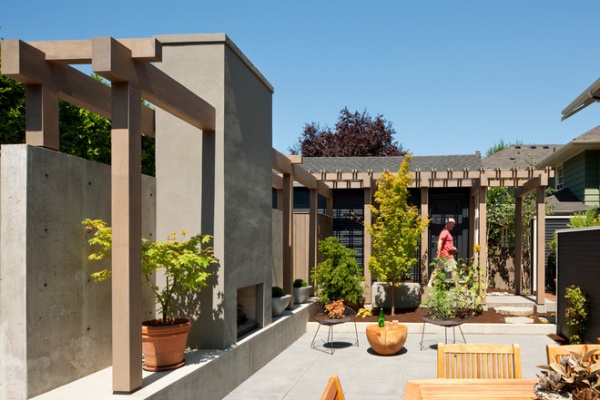
AFTER: Instead of replacing the lawn with a garden, Engle laid a concrete patio and framed the courtyard with a concrete wall and wood trellis. An integrated outdoor fireplace warms the intimate space on cool Pacific Northwest nights. The homeowners use the outdoor space for concerts, dinner parties and fireside chats, and spend much of their time outside from spring until fall. A new concrete path leads from the car to the backyard and makes the journey less of a trek.
See more of this Seattle courtyard
More: How to Replace Your Lawn With a Garden
Related Articles Recommended












